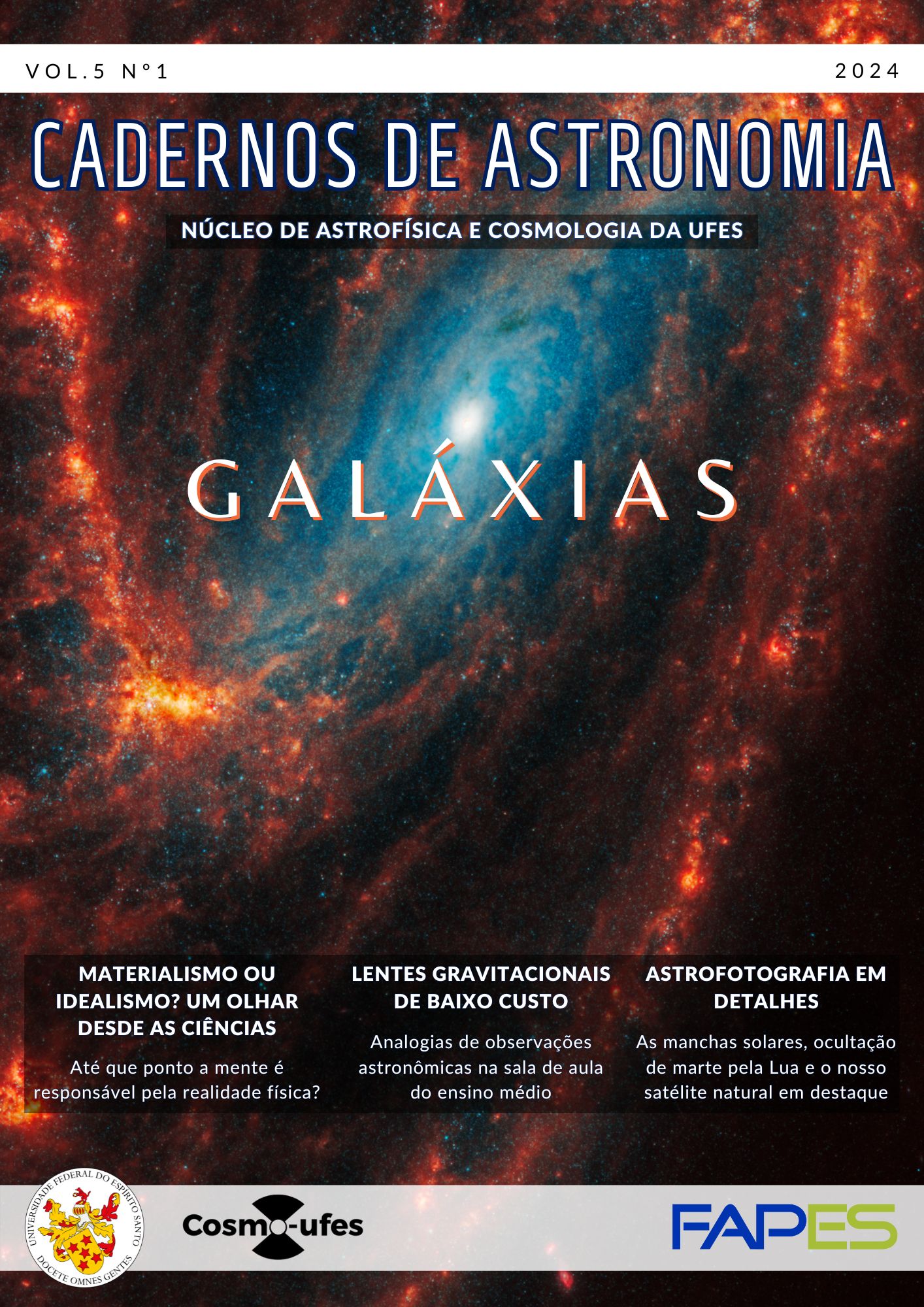Machine learning: investigating the relationship between biogenic atmospheres, exoplanets and planetary systems
DOI:
https://doi.org/10.47456/Cad.Astro.v5n1.43184Keywords:
exoplanets, atmospheres, biogenic, machine learningAbstract
The research proposal was to study planetary systems with exoplanets capable of sustaining biogenic atmospheres and understand their role in this context. For this task, the Earth similarity index (ESI) coupled to a multilevel modeling perspective was considered, as it is an index for classifying exoplanets by similarity to Earth. The characterization of these systems is important because astronomical missions whose objective is to identify biological markers that reveal the presence of life will be able to choose priority targets and eliminate less promising targets. 72 extrasolar systems were studied using unsupervised and supervised Machine Learning techniques with the aim of identifying the formation of clusters and investigating the multilevel relationship between planets and planetary systems. The work demonstrates that a wide variety of types of exoplanets can probably harbor atmospheres capable of being studied remotely, although these results do not consider the real internal constitutions of the objects studied, as they are unknown, preventing a historical reconstruction of the evolution process of these planets. The multilevel approach demonstrates that approximately 54% of the variation in the ESI value is due to the effect of the conditions of the planetary system where the exoplanet under study is located.
Downloads
References
[1] M. Mayor e D. Queloz, A Jupiter-mass companion to a solar-type star, Nature 378(6555), 355 (1995). DOI: https://doi.org/10.1038/378355a0
[2] J. F. Kasting, D. P. Whitmire e R. T. Reynolds, Habitable Zones around Main Sequence Stars, Icarus 101(1), 108 (1993). DOI: https://doi.org/10.1006/icar.1993.1010
[3] R. Heller e J. Armstrong, Superhabitable Worlds, Astrobiology 14(1), 50 (2014). DOI: https://doi.org/10.1089/ast.2013.1088
[4] L. Zeng, D. Sasselov e S. Jacobsen, Mass-Radius Relation for Rocky Planets based on PREM, The Astrophysical Journal 819, 127 (2016). DOI: https://doi.org/10.3847/0004-637X/819/2/127
[5] V. Stamenković et al., The influence of pressure-dependent viscosity on the thermal evolution of super-Earths, The Astrophysical Journal 748(1), 41 (2012). DOI: https://doi.org/10.1088/0004-637X/748/1/41
[6] L. Noack e D. Breuer, Plate tectonics on rocky exoplanets: Influence of initial conditions and mantle rheology, Planetary and Space Science 98, 41 (2014). DOI: https://doi.org/10.1016/j.pss.2013.06.020
[7] C. Dorn, L. Noack e A. B. Rozel, Outgassing on stagnant-lid super-Earths, Astronomy & Astrophysics 614, A18 (2018). DOI: https://doi.org/10.1051/0004-6361/201731513
[8] L. Noack, A. Rivoldini e T. Van Hoolst, Volcanism and outgassing of stagnant-lid planets: Implications for the habitable zone, Physics of the Earth and Planetary Interiors 269, 40 (2017). DOI: https://doi.org/10.1016/j.pepi.2017.05.010
[9] National Aeronautics and Space Administration (NASA), NASA Exoplanet Archive, Página da internet. Disponível em https://exoplanetarchive.ipac.caltech.edu/index.html, acesso em mar. 2024.
[10] D. Schulze-Makuch et al., A Two-Tiered Approach to Assessing the Habitability of Exoplanets, Astrobiology 11(10), 1041 (2011). DOI: https://doi.org/10.1089/ast.2010.0592
[11] L. P. Fávero e P. Belfiore, Manual de análise de dados: estatística e modelagem multivariada com excel, SPSS e stata (Elsevier, Rio de Janeiro, 2017).
[12] L. Bernardes, Machine Learning: uma ferramenta para o estudo de exoplanetas que podem apresentar atmosferas biogênicas, Monografia (Especialização em Data Science e Analytics), Escola Superior de Agricultura Luiz de Queiroz – Universidade de São Paulo (2023).
[13] J. A. Hartigan e M. A. Wong, Algorithm AS 136: A K-Means Clustering Algorithm, Journal of the Royal Statistical Society. Series C (Applied Statistics) 28(1), 100 (1979). DOI: https://doi.org/10.2307/2346830
[14] R. A. Johnson e D. W. Wichern, Applied multivariate statistical analysis (Pearson Education, 2007), 6a ed.
[15] P. Dangeti, Statistics for Machine Learning (Packt Publishing, 2017).
[16] S. W. Raudenbush e A. S. Bryk, Hierarchical linear models: applications and data analysis methods (Thousand Oaks Sage Publications, 2002).
[17] B. Tabachnick e L. Fidell, Using Multivariate Statistics: Pearson New International Edition (Editora Pearson, 2013).
Downloads
Published
How to Cite
Issue
Section
License
Copyright (c) 2024 Luander Bernardes, Anna Carolina Martins

This work is licensed under a Creative Commons Attribution 4.0 International License.






